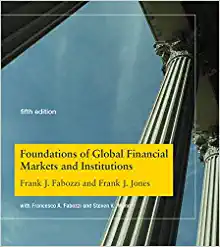Question
LESSON 10 1.Which trend could indicate that an economic peak period is on the horizon? A. More businesses are spending to build new plants and
LESSON 10
1.Which trend could indicate that an economic peak period is on the horizon?
A. More businesses are spending to build new plants and factories.
B. A shortage has raised the price of oil.
C. Businesses are cutting production to avoid surpluses.
D. Consumers have decreased spending and increased savings.
2.___________ are the sum of all the individual parts of the economy.
A. Variables
B. Aggregates
C. Averages
D. Price deflators
3.Which of the following necessarily takes place during a period of contraction?
A. Business activity slows, which could precipitate a recession or depression.
B. Consumers go into further debt.
C. New businesses open, but do not hire any new workers.
D. Businesses renew contracts with labor in anticipation of the next boom.
4.Why must the Gross Domestic Product (GDP) be adjusted for the effects of inflation?
A. To make the comparison with prior years' GDP figures more accurate
B. To counter the risk of deflation
C. To graphically illustrate how rapidly prices can rise
D. To insure producers are paid a fair market price for their final goods and services
5.Imagine you are a production manager at a manufacturing company. From recent market research, it has been determined that the aggregate price level has increased. Which of the following can you expect?
A. An increase in production
B. A decrease in production
C. Layoffs
D. A hiring freeze
6.The Great Depression of the 1930s was precipitated by__________________.
A. the beginnings of World War II
B. the rapid growth of the new automobile industry
C. the stock market crash of 1929
D. the collapse of the Bank of the United States in 1928
7.Disposable personal income (DI) is personal income (PI) less _____________.
A. transfer payments
B. personal taxes
C. Medicaid payments
D. a deductible for basic needs like food, clothing, and housing
8.Where would the equilibrium price level be found?
A. At the price floor of the aggregate supply and demand curves
B. Where the aggregate supply and demand curves meet
C. To the right of the demand curve to anticipate increasing demand
D. To the left of the supply curve to account for changes in the CPI
9.When using the implicit GDP price deflator as an index, what is the aggregate demand based on?
A. Net domestic output
B. Gross domestic output
C. National domestic output
D. Real domestic output
10.Which of the following is NOT considered by economists to be a main force in causing business fluctuations?
A. Psychological factors
B. Government activity
C. Labor unions
D. Business investment
LESSON 11
1.A different type of money is used in the United States today than was used in the early years of the country. Which event signifies the point at which the currency type changed?
A. The war of 1812
B. The dissolution of the Second Bank of the United States
C. World War II
D. The Civil War
2.What is money that is backed or can be exchanged for items of value referred to as?
A. Commodity money
B. Representative money
C. Fiat money
D. Exchange money
3.For what reason will people always accept gold as a medium of exchange?
A. It has historical value.
B. It has intrinsic value.
C. It has aesthetic value.
D. It has diminutive value.
4.Which of the following is an example of Fiat money?
A. US dollar
B. Chinese yen
C. Japanese yuan
D. European euro
5.When was the Federal Reserve System established?
A. 1865
B. 1913
C. 1929
D. 1933
6.Choose the correct answer.
In this lesson we explored money and banking. We learned why we use paper money and how banks work. Money can be used as a medium of exchange rather than ___________.
A. bartering
B. using checks
C. using credit cards
D. writing IOUs
7.Which of the following is correctly matched?
A. United States: dollar
Japan: yuan
China: yen
Europe: pound
B .United States: dollar
Japan: yen
China: won
Europe: euro
C. United States: dollar
Japan: won
China: yen
Europe: euro
D. United States: dollar
Japan: yen
China: yuan
Europe: euro
8.What action or law granted Congress the power to mint coins?
A. The establishment of the Bank of the United States in 1791
B. The power to mint coins is granted in the U.S. Constitution
C. The National Bank Acts of 1863 and 1864
D. The Coinage Act of 1792
9.In economic terms, what is bartering referred to as?
A. Bi-cameral accord of exchange
B. Twofold agreement of trade
C. Dual concurrence of requirements
D. Double coincidence of wants
10.Which is an example of representative money?
A. A silver certificate backed by a deposit of silver at a bank
B. Paper money with its face value determined by the government
C. A commodity with a value to its owner
D. A check or note that represents a certain value
Step by Step Solution
There are 3 Steps involved in it
Step: 1

Get Instant Access to Expert-Tailored Solutions
See step-by-step solutions with expert insights and AI powered tools for academic success
Step: 2

Step: 3

Ace Your Homework with AI
Get the answers you need in no time with our AI-driven, step-by-step assistance
Get Started


